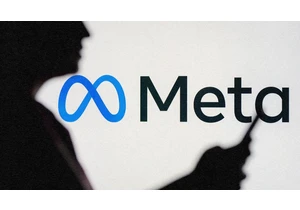You’re probably reading this over Wi-Fi. Today marks the 25th anniversary of this transformative technology—a milestone that reminds us just how integral Wi-Fi has become in our daily lives. For Gen Z, the idea of a world without Wi-Fi is nearly unimaginable, and even millennials struggle to remember a time when a wired connection was necessary to get online. Today, Wi-Fi is the world’s most popular way to access the internet. It’s a standard element of computers, phones, TVs, smartwatches, and countless other devices, and its reach continues to grow.
Yet unlike other groundbreaking technologies with well-documented origins, Wi-Fi’s beginnings are clouded by myth and misinformation. Search the internet or ask ChatGPT about Wi-Fi’s inventors, and you’ll likely read about a team of Australian scientists at CSIRO. But while many can claim to have contributed to the original Wi-Fi standard, that team is not on the list.
Wi-Fi’s official launch occurred on September 15, 1999, when a coalition of industry players committed to ensuring that wireless connectivity would work seamlessly across devices from different manufacturers. The name “Wi-Fi” may have seemed quirky at first, but it was certainly more marketable than “IEEE 802.11b,” the technical standard underpinning the technology.
While it’s tempting to think Wi-Fi was born from a singular genius’s eureka moment, the truth is far more interesting. Imagine the Institute of Electrical and Electronics Engineers (IEEE)—the world’s largest technical professional organization, with more than 325,000 members—embarking on a yearslong political and technical process to develop a wireless networking standard. Vic Hayes, often called the “father of Wi-Fi,” led an international committee that included hundreds of engineers from more than 100 competing companies. The resulting standard took nearly a decade and the work of many hands.
However, the IEEE standard alone wasn’t enough to create Wi-Fi. Simply adhering to the standard didn’t ensure that devices would communicate flawlessly—often, they didn’t. That’s where a group representing six companies, ultimately called the Wi-Fi Alliance, came in. Their mission: to guarantee wireless devices could connect reliably and that this compatibility would endure as the technology evolved. These pioneers promoted their vision at a sparsely attended press event on Wi-Fi’s launch day.
The story goes even deeper, with the path to the original standard making unexpected stops in Hollywood, Hawaii, and the Netherlands. During World War II, actress Hedy Lamarr and composer George Antheil pioneered spread-spectrum radio, later to become a critical pillar of Wi-Fi. In 1971, professor Norm Abramson spearheaded ALOHAnet, a wireless network that linked the Hawaiian Islands. Later, a skilled Dutch team from National Cash Register integrated these technologies and advocated for the IEEE to establish a wireless networking standard.
So, who invented Wi-Fi? The answer is not a “who” but a “they”—a long list of contributors, including many unsung heroes.
Wi-Fi’s incredible success as a global standard is due to continuous innovation. Over the past 25 years, new technologies have been layered onto the original Wi-Fi standard, always maintaining backward compatibility. That’s why your modern laptop can still connect to a decades-old router. The IEEE has issued 30-plus specification amendments, and the Wi-Fi Alliance—now with more than 900 member companies—has ensured not just interoperability but also spearheaded global initiatives to maintain seamless connectivity across generations of Wi-Fi. These enhancements, often cloaked in an alphabet soup of acronyms, have improved Wi-Fi’s performance by more than 4,000 times since its inception.
What about the Australian team at CSIRO? Led by John O’Sullivan, it explored wireless networking in the 1990s but did not participate in the creation of the IEEE standard. CSIRO became famous for a legal battle started in 2005, winning upwards of $400 million in payments from Wi-Fi vendors for a patent related to a specific technology with the acronym OFDM. However, OFDM wasn’t included in Wi-Fi until its second version in 2003—meaning the CSIRO team had no hand in the original 1999 release.
Wi-Fi’s galactic opportunity
At the Wi-Fi Alliance’s recent silver anniversary celebration, original inventors, current implementers, and visionaries shared stories highlighting Wi-Fi’s transformative impact on nearly every aspect of modern life. Some surprises? Wi-Fi’s invisible waves can now detect the presence of people in a room, and plans are in motion for Wi-Fi hotspots on the moon. Wi-Fi was lauded not only as a global treasure, but a galactic opportunity.
Reflecting on Wi-Fi’s journey, the inventors marveled at its profound societal impact, far beyond their wildest expectations. From connecting the unconnected in emerging markets to enabling remote work during a global pandemic, Wi-Fi has changed the world in ways they never imagined.
No one knows exactly how Wi-Fi will further transform our lives over the next quarter century, but at least the internet should understand how it all began.
<hr class=“wp-block-separator is-style-wide”/>
Jeff Abramowitz was an author of the IEEE 802.11/802.11b standards, a founder of the Wi-Fi Alliance, and has held executive roles in the Wi-Fi industry for 30 years. His oral history of Wi-Fi is chronicled in the Computer History Museum. Abramowitz is cofounder and chief commercial officer of Ept AI, and is writing a book on the history of Wi-Fi.
<hr class=“wp-block-separator is-style-wide”/> https://www.fastcompany.com/91189769/who-invented-wi-fi?partner=rss&utm_source=rss&utm_medium=feed&utm_campaign=rss+fastcompany&utm_content=rss
Accedi per aggiungere un commento
Altri post in questo gruppo

If you’ve followed Apple for any length of time, you’ve no doubt come across the notion that the company doesn’t rush into adopting cutting-

Every now and then, you run into a tool that truly wows you.
It’s rare—especially nowadays, when everyone and their cousin is coming out with overhyped AI-centric codswallop tha

Tesla released its quarterly earnings report on Tuesday, its first since the company’s chief executive, Elon Musk, took up residence in the Trump White House and immediately began trying to fire f

There’s never a dull day in the world of weight-loss medication. This week brought new restrictions on compounded GLP-1 medication, the cheaper, copycat versions of brand-name drugs that tel

In December 2023, I wrote an article exploring Apple CEO Tim Cook’s most likely successors, because t

“Meta profits, kids pay the price,” was the message delivered by dozens of grieving families at the doors of Meta’s Manhattan office on Thursday.
Forty-five families traveled from

The world’s auto industry is getting a shake-up from Chinese automakers that
